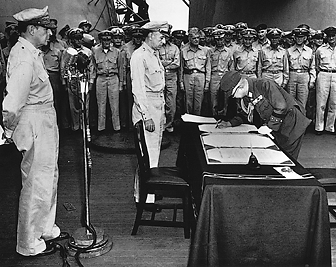Jan. 16-22, 2014, Current Events Lesson Plan
Current Event:
Hiroo Onoda, a Japanese military officer who refused to surrender with the rest of his country’s forces at the end of World War II (1939-1945), recently died at the age of 91. In 1944, Onoda, a military intelligence officer, was sent to the Philippine island of Lubang. Before Allied forces attacked the island in late 1944, Japanese commanders withdrew many of their forces. But thousands of Japanese soldiers, including Onoda, were ordered to remain at their posts. Onoda’s commanding officer told him, “… whatever happens, we’ll come back for you.” Like other Japanese soldiers, Onoda believed it was better to die rather than surrender. Onoda and three enlisted soldiers then set up a camp, from which to continue the war. They lived a perilous existence, relying on wild plants and stolen food, battling mosquitoes and tropical heat, and occasionally skirmishing with Philippine villagers. One of the other holdouts surrendered in 1950; the other two were later killed by Filipino forces. In 1974, Onoda was found by a Japanese student who had traveled to Lubang to search for him. Citing his orders to remain on his post, Onoda still refused to leave. Finally, the Japanese government dispatched a delegation to meet with Onoda. After turning himself over to authorities in 1974, Onoda returned to Japan, where he received a hero’s welcome.

General of the U.S. Army Douglas MacArthur watches as General Yoshijiro Umezu of Japan signs that country's formal surrender on Sept. 2, 1945. For decades afterward, some Japanese soldiers in Pacific countries occupied by the Japanese refused to believe the war had ended. (UPI/Corbis-Bettmann)
Objective:
World War II was the most destructive war in history. It killed more people and destroyed more property than any other war in history. Historians believe that 50 million to 60 million soldiers and civilians died in the war. World War II began in 1939, when Nazi Germany invaded Poland. On Dec. 7, 1941, the Japanese launched a surprise attack on the U.S. Navy at Pearl Harbor, Hawaii. The following day, Japan began landing troops on the Philippines. In the spring of 1942, tens of thousands of American and Filipino troops surrendered to the Japanese. Thousands of American and Filipino soldiers were killed in action and in the Bataan Death March. The Japanese suffered over 2,500 killed. In October 1944, American troops returned to the Philippines. By late January 1945, the American forces had liberated much of the country. American losses in the Philippines were heavy, with 13,700 killed in action. Japanese losses were catastrophic, with more than 250,000 dead. Japan was doomed to defeat in World War II after losing the Philippines. However, it refused to surrender. Between the 6th and 9th of August 1945, the Americans dropped two atomic bombs on Japan, and the Soviet Union declared war on Japan. On August 14, the Japanese agreed to an unconditional surrender. The Behind the Headlines news stories and related World Book articles explore the people and events of World War II.
Words to know:
Discussion Topics:
1. Ask your students to name military and political leaders of World War II. (Famous military leaders include Dwight D. Eisenhower, Douglas MacArthur, Bernard Montgomery, George S. Patton, and Erwin Rommel. Famous political leaders include Winston Churchill, Hirohito, Adolf Hitler, Benito Mussolini, Franklin D. Roosevelt, and Joseph Stalin.)
2. Returning home 30 years after he was sent to the Philippines, Onoda found that Japan had greatly changed. How do you think your country will be different 30 years from now?
3. Ask your students to debate, “Should Hiroo Onoda have stopped fighting the war before 1974, even if he was not relieved of his post by his commander?”
4. Ask your students to use World Book’s Timelines feature to view the timeline of the history of World War II.


